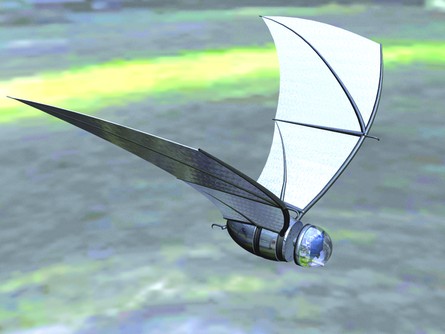The US Army Research Laboratory has awarded the University of Michigan college of engineering a five-year, $10 million grant to establish the U-M Center for Objective Microelectronics and Biomimetic Advanced Technology (COM-BAT) as part of the army's wider industry, academic collaboration to create a micro air vehicle.
The centre's 12 faculty members and 18 graduate students will focus on microelectronics for the sensors, communication tools and batteries for the MAV - called "the bat".
The bat is envisaged to be 152mm (6in) long, have a mass of 113g (0.25lb) and would use about 1W of power during its surveillance mission.
It is also expected to have tiny stereo vision cameras, an array of mini omni-directional microphones and small chemical and radiological detectors.
Used by soldiers in the field, the bat would radio back what it found while harnessing energy from solar, wind, vibration and other sources to recharge its lithium battery.
Technologies of interest include quantum dot solar cells that are twice as efficient as current commercial cells.
"These are all concepts, and many of them are the next-generation devices we have already developed. We're trying to push the edge of our technologies to achieve functionality that was not possible before," says COM-BAT director and U-M department of electrical engineering and computer science professor Kamal Sarabandi.
The U-M centre also involves the University of California at Berkeley and the University of New Mexico.
COM-BAT is one of four centres charged with developing a different subsystem of the bat. The U-M army grant includes an option to renew for an additional five years and $12.5 million.
 |
|---|
© University of Michigan |
Source: FlightGlobal.com
















